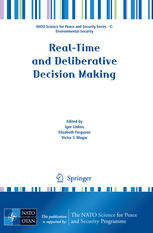

Most ebook files are in PDF format, so you can easily read them using various software such as Foxit Reader or directly on the Google Chrome browser.
Some ebook files are released by publishers in other formats such as .awz, .mobi, .epub, .fb2, etc. You may need to install specific software to read these formats on mobile/PC, such as Calibre.
Please read the tutorial at this link: https://ebookbell.com/faq
We offer FREE conversion to the popular formats you request; however, this may take some time. Therefore, right after payment, please email us, and we will try to provide the service as quickly as possible.
For some exceptional file formats or broken links (if any), please refrain from opening any disputes. Instead, email us first, and we will try to assist within a maximum of 6 hours.
EbookBell Team

5.0
78 reviewsDecision-making tools are needed to support environmental management in an increasingly global economy. Addressing threats and identifying actions to mitigate those threats necessitates an understanding of the basic risk assessment paradigm and the tools of risk analysis to assess, interpret, and communicate risks. It also requires modification of the risk paradigm itself to incorporate a complex array of quantitative and qualitative information that shapes the unique political and ecological challenges of different countries and regions around the world. This book builds a foundation to characterize and assess a broad range of human and ecological stressors, and risk management approaches to address those stressors, using chemical risk assessment methods and multi-criteria decision analysis tools. Chapters discuss the current state-of-knowledge with regard to emerging stressors and risk management, focusing on the adequacy of available systematic, quantitative tools to guide vulnerability and threat assessments, evaluate the consequences of different events and responses, and support decision-making. This book opens a dialogue on aspects of risk assessment and decision analysis that apply to real-time (immediate) and deliberative (long-term) risk management processes.